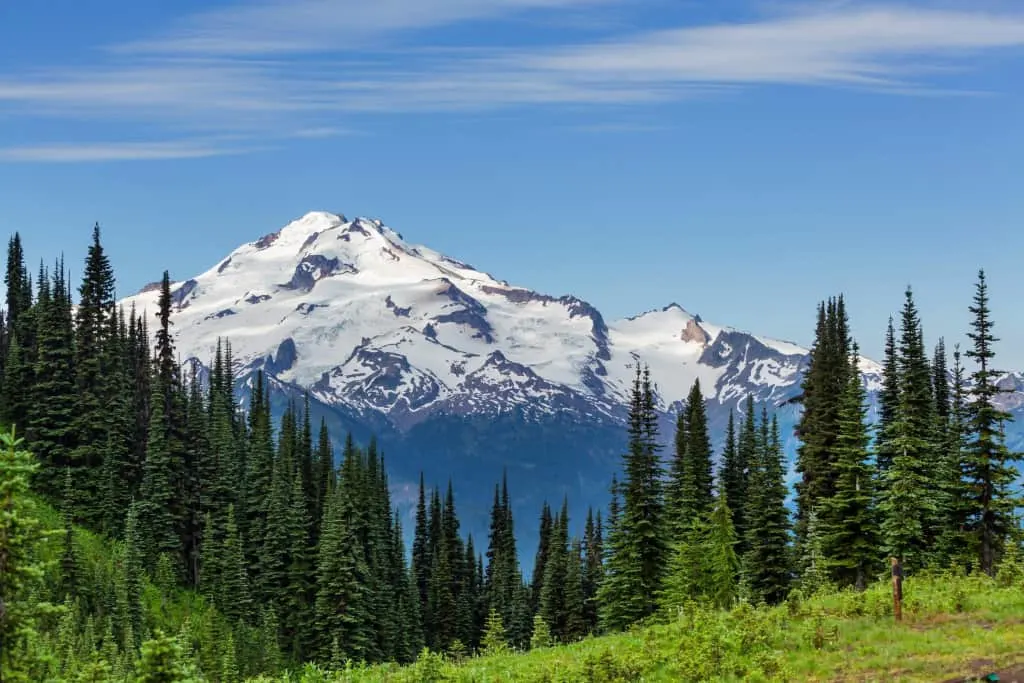If you are interested in exploring some of the amazing national park sites in the Pacific Northwest, using Seattle as a home base is a great idea! There are several national parks near Seattle, from the lush, temperate rainforests of Olympic National Park to the incredible history surrounding Fort Vancouver.
Here are 13 national parks that are within a day’s drive of Seattle, including one right in town!
13 National Parks Near Seattle
Olympic National Park
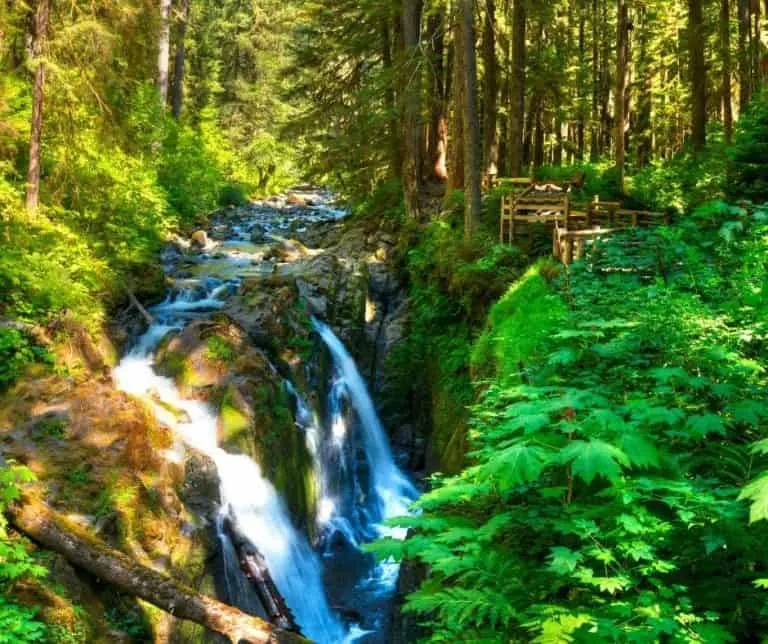
Distance from Seattle: 100 miles to Hurricane Ridge (~3 hours, includes a ferry ride), 147 miles to Quinault Rainforest (2 hours, 40 minutes)
Olympic National Park covers nearly one million acres and includes a variety of ecosystems, from rugged coastline and old-growth forests to snow-capped mountains and alpine meadows.
Read our complete guide to visiting Olympic National Park.
The closest major attraction in Olympic National Park is Hurricane Ridge. You can reach this portion of the park from Seattle by taking the Bainbridge Island Ferry and crossing Hood Canal Floating Bridge over to the northern portion of the Olympic Peninsula.
The scenic drive up to Hurricane Ridge offers stunning views of the Olympic Mountains and provides access to several hiking trails that allow you to explore the alpine scenery. The Hurricane Ridge Visitor Center is also a must-visit, providing exhibits and ranger-led programs that educate visitors on the unique natural and cultural history of the area.
Another popular destination within Olympic National Park is the Hoh Rainforest. The rainforest is known for its lush, green canopy and unique plant and animal life. Visitors can explore the area on several hiking trails, including the Hall of Mosses Trail and the Hoh River Trail.
Deep in the rainforest you will find Sol Duc, a hot spring known for its healing mineral waters. The Sol Duc Hot Springs pools are open to visitors and there are pools at a variety of different temperatures. While in the area, take the easy, 1.6-mile round-trip trail to Sol Duc Falls, the most photographed spot in the park.
Further south is the Quinault Rainforest which surrounds Lake Quinault. Be sure to take The Quinault Rainforest Loop Drive , a 31-mile loop around Lake Quinault, where you can stop at various locations to see waterfalls, wildlife, or just take a walk through the forest.
Don’t miss the Lake Quinault Lodge, a grand lodge built in 1926 that exudes rustic elegance and a distinctive “Dirty Dancing” vibe. Even if you don’t spend the night here it is a nice place to enjoy a meal and then sit on an Adirondack chair on the large lawn overlooking the lake.
The rugged coastline of Olympic National Park stretches for over 70 miles and offers excellent opportunities for tide pooling. Visit Beach 4, Second Beach, or Ruby Beach during low tide and be whisked away into a world of sea anemones, starfish, mussels, and hermit crabs.
North Cascades National Park

Distance from Seattle: 108 miles (~ 2 hours)
North Cascades National Park is only two hours from Seattle but it is one of the least visited parks in the Lower 48. Located in the northern part of the state, the park covers over 500,000 acres and is home to some of the most stunning mountain landscapes in the United States.
North Cascades Highway is a 30-mile stretch featuring plenty of soaring mountain peaks, brilliantly blue lakes, waterfalls, and old-growth forests. It is part of the Cascade Loop National Scenic Byway, a drive you won’t want to miss. Take time to stop at the famed Diablo Lake Overlook which never disappoints.
On the shore of Diablo Lake you will find the North Cascades Environmental Learning Center which offers educational programs and events that provide insight into the park’s unique ecosystem and cultural history.
One of the most popular activities in North Cascades National Park is hiking. The park boasts over 400 miles of trails, ranging from easy day hikes to challenging multi-day backpacking trips.
Some of the most popular hikes include the Maple Pass Loop, Cascade Pass Trail, and the Thunder Creek Trail. These hikes offer breathtaking views of the park’s glaciers, alpine meadows, and towering peaks. Keep your eyes open for mountain goats as you hike.
The neighboring Ross Lake and Lake Chelan National Recreation Areas offer opportunities for boating, fishing, and wildlife viewing. Ross Lake is over 20 miles long and home to Ross Lake Resort, a floating resort with cabins that can only be accessed by hiking or ferry.
Lake Chelan is the third deepest lake in the US, and home to the hamlet of Stehekin which has only 75 permanent residents and can only be accessed by ferry. There are three hotels as well as some campgrounds in town.
Mount Rainier National Park
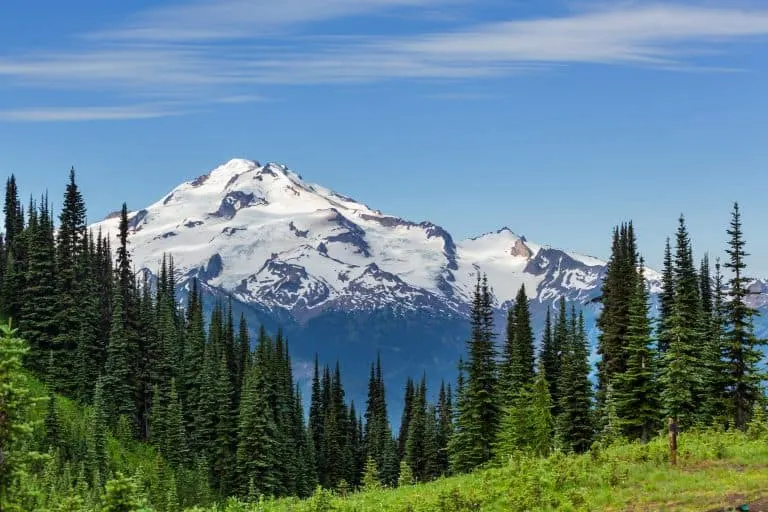
Distance from Seattle: 107 miles (2 1/2 hours)
Mount Rainier is the tallest mountain in the state (14,410 feet) and this active volcano looms on the horizon of Seattle, begging to be explored. With over 235,000 acres of pristine wilderness, Mount Rainier National Park offers a wide range of recreational activities for visitors to enjoy.
The most popular place to visit in Mount Rainier is Paradise. It is the main winter use area of the park, receiving an average of 643 inches of snowfall each year! In the winter folks visit to enjoy snowshoeing, cross-country skiing, and sledding.
Paradise is also a wonderful summer destination. Snow can linger into July some years, but as it melts it is replaced with verdant meadows filled with wildflowers. The Skyline Trail can’t be missed. It is 5.5 miles in length but you can take it as far as you would like. On this trail you will catch great views of Mount Rainier and the Nisqually Glacier as well as Myrtle Falls.
After your hike, enjoy a meal at the Paradise Inn, a historic spot built in 1916. Before you leave the Paradise area via the Nisqually entrance, make a stop at Narada Falls which is just off the road in between Paradise and Longmire.
For those who prefer a more leisurely experience, Mount Rainier National Park offers several scenic drives. The most popular drive is the 18-mile Paradise Loop, which offers stunning views of the mountain and its surrounding meadows and forests.
There are three other entrances to the park besides the Nisqually entrance which leads you to Paradise: the Carbon River entrance in the northwest, the White River entrance in the northeast, and the Stevens Canyon entrance in the southeast.
From the Stevens Canyon entrance, one of the easiest and best trails to enjoy is the Grove of the Patriarchs Trail, a 1.5-mile walk past some of the largest and oldest Douglas firs, cedars, and hemlocks in the park.
On the eastern side of the park is Crystal Mountain Resort, a ski resort that offers scenic gondola rides in the summer. Take the gondola up to the peak of Crystal Mountain and enjoy a meal on the patio at Summit House Restaurant for views of Mount Rainier that are out of this world.
Looking for a really big adventure? Hike the 93-mile Wonderland Trail which circumnavigates around Mount Rainier. It takes about 10 days to complete the loop and permits are limited..
San Juan Islands National Monument and National Historic Park

Distance from Seattle: 109 miles (~3 1/2 hours, includes a ferry ride)
San Juan Islands National Monument consists of over 1,000 acres of preserved land spread across 75 different islands, making it a popular destination for outdoor enthusiasts and nature lovers. It was established 10 years ago by a proclamation by President Obama.
One of the most popular activities in San Juan Islands National Monument is whale watching. The waters surrounding the islands are home to a variety of marine life, including orcas, humpback whales, and sea lions. Visitors can take guided boat tours to observe these magnificent creatures in their natural habitats.
Another popular activity is kayaking. The calm waters around the islands provide an ideal environment for kayaking, and visitors can explore the coves and bays around the islands to get a closer look at the wildlife and natural beauty of the area.
San Juan Islands National Historic Park is made up of several different locations across the San Juan Islands, including English Camp, American Camp, and the Pig War Museum. Together, these sites tell the story of the peaceful resolution of a border dispute between the United States and Great Britain in the mid-19th century.
The park features a variety of historic buildings, including barracks, officers’ quarters, and a blockhouse. Visitors can also view exhibits at the Pig War Museum, which tells the story of the conflict and its resolution.
Ebey’s Landing National Historic Reserve
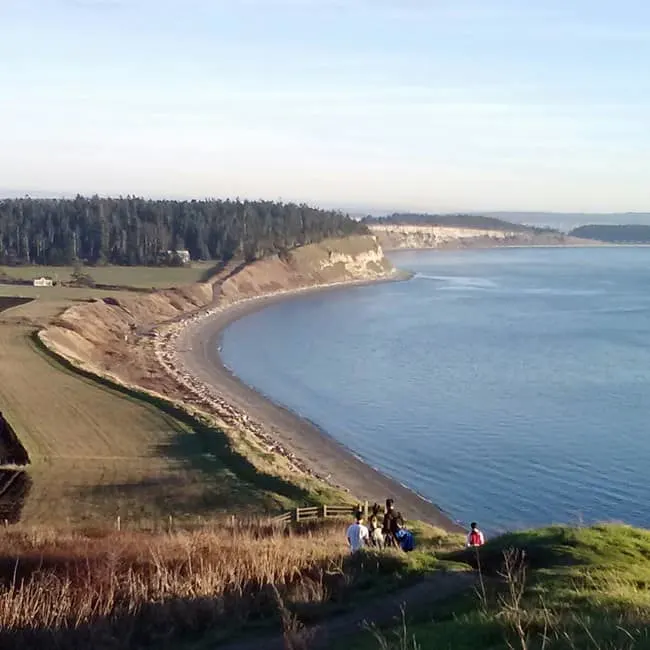
Distance from Seattle: 60 miles (~2 hours, includes a ferry ride)
Ebey’s Landing National Historic Reserve was established to preserve the natural and cultural history of the area and covers over 17,500 acres of land, including farmland, forests, and beaches on Whidbey Island.
One of the most popular activities in Ebey’s Landing National Historic Reserve is hiking. The Bluff Trail is one of the most popular hikes in the reserve, offering breathtaking views of the Puget Sound and the Olympic Mountains.
Another popular activity is exploring the historic sites within the reserve. Visitors can explore several historic structures, including the Ferry House, the Blockhouse, and the Jacob and Sarah Ebey House. These structures offer a glimpse into the history of the area and the daily lives of the people who lived there.
Ebey’s Landing National Historic Reserve is also a popular destination for birdwatching. The reserve is home to several bird species, including bald eagles, peregrine falcons, and great blue herons
Fort Vancouver National Historic Site
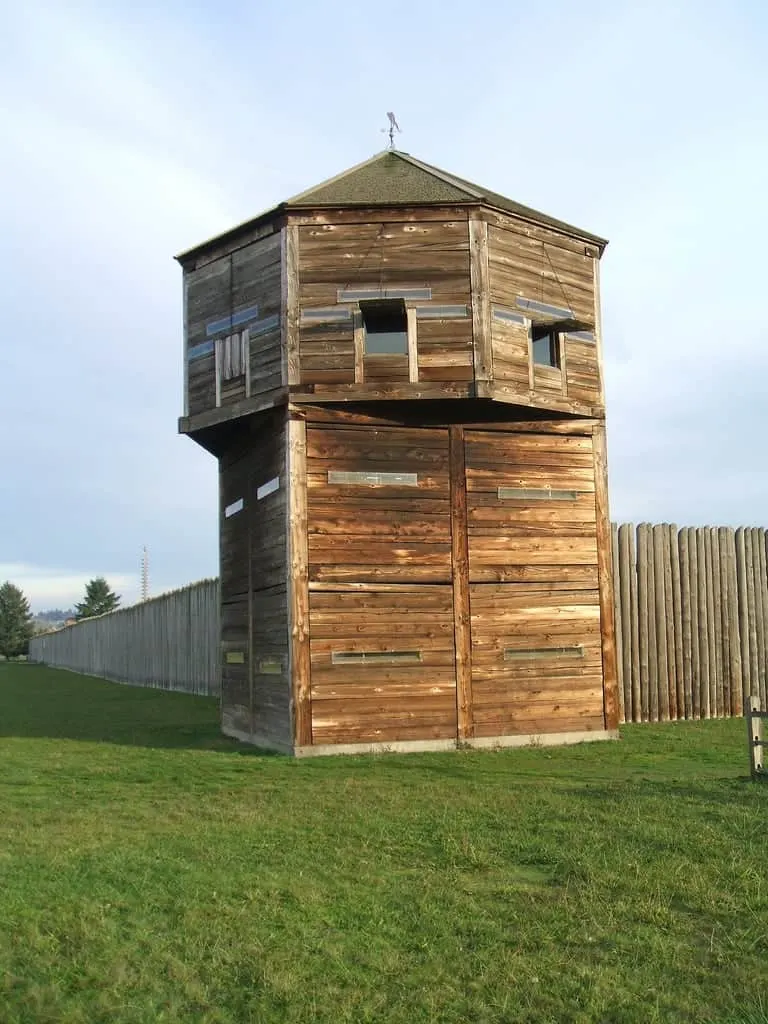
Distance from Seattle: 165 miles (2 1/2 hours)
Fort Vancouver was once a thriving fur trading post and military fort along the Columbia River. It is now home to several restored historic buildings and archaeological sites that tell the story of the region’s rich history.
At Fort Vancouver National Historic Site visitors can step back in time and explore several buildings, including the reconstructed fort and several a reconstructed blacksmith shop, kitchen, jail, and trading post. The Pearson Air Museum features exhibits on the history of aviation and the role of the Pearson Airfield in military history.
Many cultural events are held at the site throughout the year, including the Fourth of July Celebration, the Brigade Encampment, and the Lantern Tour.
Fort Vancouver National Historic Site is also a destination for hiking and outdoor recreation. The site features several dog-friendly trails that wind through the surrounding forests and along the Columbia River. Enjoy views of the river and the surrounding landscape while hiking, birdwatching, or simply enjoying a picnic.
Lewis and Clark National Historic Park
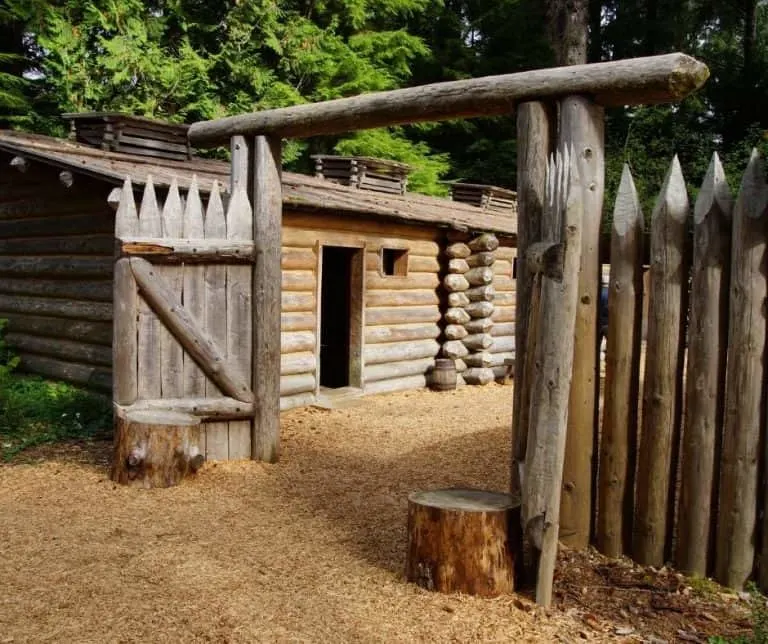
Distance from Seattle: 187 miles (3 hours, 15 minutes)
The Lewis and Clark National Historic Park just across the Columbia River in Astoria, Oregon offers visitors a chance to learn about the famous expedition led by Meriwether Lewis and William Clark.
This park is home to a replica of Fort Clatsop, which is where the Lewis and Clark Expedition spent the winter of 1805-06. Fort Clatsop was named after the Native Americans Lewis and Clark befriended in the area. Visitors can explore the fort and learn about the daily life of the expedition members, complete with living history demonstrations.
Fort Clatsop is a stop on our Washington Coast Road Trip itinerary.
This park is also along the Fort to Sea Trail, which was originally blazed by the Corps of Discovery so they could hunt, gather, and trade with the neighboring Tillamook, Chinook, and Clatsop Indians.
Klondike Gold Rush National Historical Park- Seattle Unit
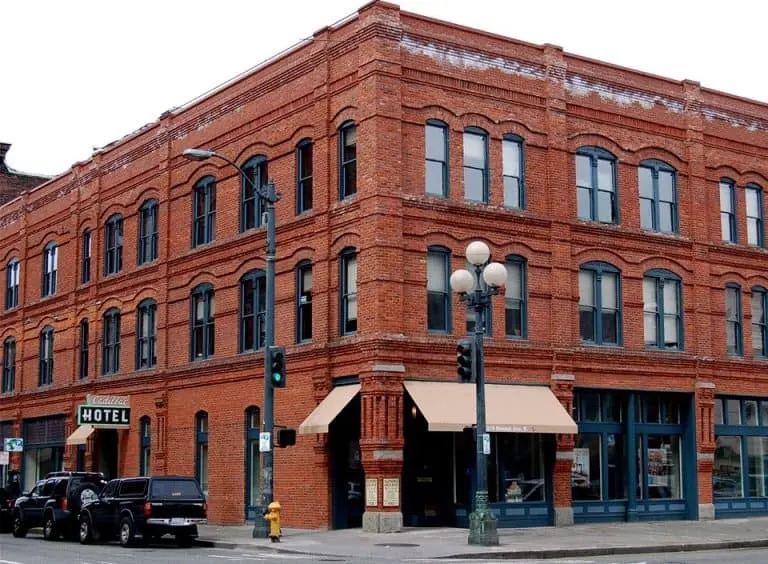
Distance from Seattle: 0 miles, this park is in Seattle
The Klondike Gold Rush National Historical Park- Seattle Unit tells the story of the gold rush that transformed the Pacific Northwest at the turn of the 20th century. Located in downtown Seattle, the park offers a unique blend of indoor exhibits and outdoor activities that provide visitors with a deep understanding of the gold rush era.
First, take time to explore the indoor exhibits. The park has several displays that showcase the history of the gold rush, including a film presentation, museum exhibits, and artifacts from the era. The exhibits highlight the experiences of the miners, merchants, and other individuals who were involved in the gold rush, as well as the impact it had on the development of Seattle and the Pacific Northwest.
You will also want to take a guided tour of the historic district. The park has several buildings that have been preserved from the gold rush era, including the Cadillac Hotel and the Pioneer Building.
Lake Roosevelt National Recreation Area
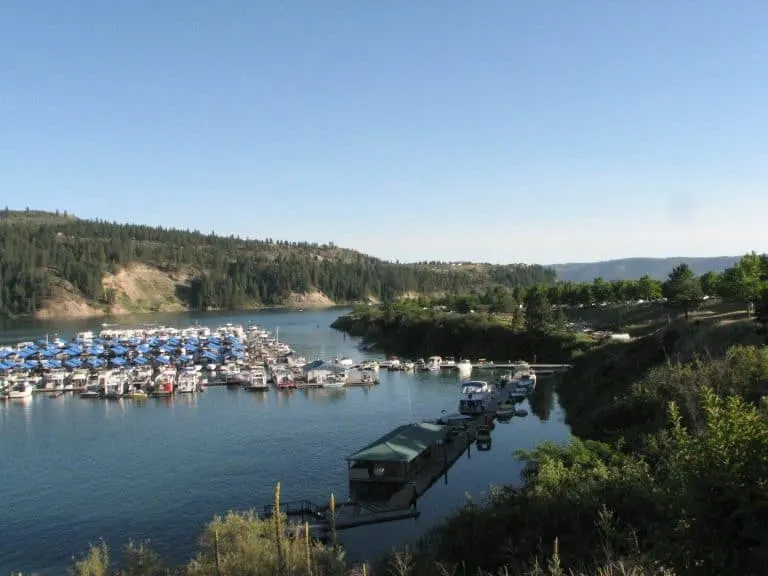
Distance from Seattle: 290 miles (5 hours, 45 minutes)
Lake Roosevelt National Recreation Area is a natural playground in northeastern Washington, encompassing over 130 miles of the upper Columbia River, as well as several large lakes and the surrounding forest.
The recreation area has several boat launches and marinas, making it easy for visitors to enjoy a day on the water. Visitors can explore the lakes and rivers by powerboat, sailboat, or kayak.
For those who prefer land-based activities, Lake Roosevelt National Recreation Area also offers several hiking and biking trails.
The Porcupine Bay Trail is a four-mile round-trip trail that offers scenic views of Lake Roosevelt and the surrounding mountains. The trail is relatively easy and can be completed in a few hours, making it a great choice for families and beginner hikers.
The recreation area has several historical sites, including Fort Spokane and the Keller Heritage Center. These sites offer a glimpse into the area’s history, including the early days of European settlement and the role of the Columbia River in the region’s development.
Manhattan Project National Historical Park Hanford
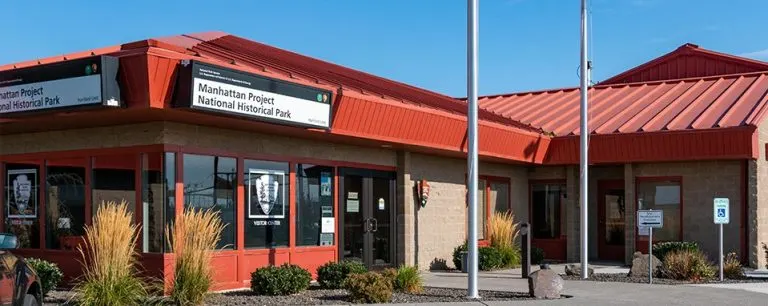
Distance from Seattle: 200 miles (3 hours, 10 minutes)
Manhattan Project National Historical Park Hanford is an interesting locale that tells the story of the development of the atomic bomb during World War II. This park in southeastern Washington is one of several sites that were critical to the Manhattan Project, which produced the plutonium used in the atomic bomb that was dropped on Nagasaki.
The most popular thing to do at this park is to take a guided tour of the B Reactor. The B Reactor was the first full-scale nuclear reactor in the world and was a critical part of the Manhattan Project.
In addition to the B Reactor, Manhattan Project National Historic Park Hanford also includes several other sites, including the Hanford Site’s historic district and the White Bluffs Bank.
The historic district includes several buildings that were critical to the Manhattan Project, including the original reactor building and the site’s control room. The White Bluffs Bank was the site of the first plutonium production reactor and is now a museum that tells the story of the Manhattan Project.
Whitman Mission National Historic Site
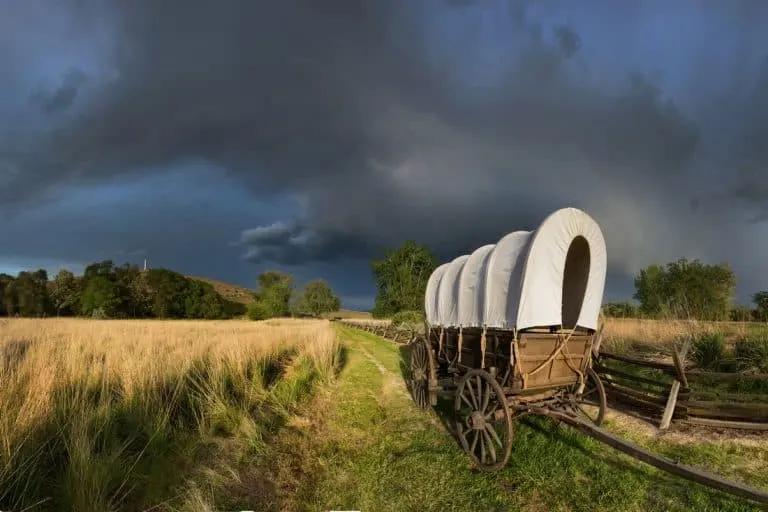
Distance from Seattle: 266 miles (4 hours)
Whitman Mission National Historic Site is a tribute to the tragic event that took place in 1847, when 13 people, including Marcus and Narcissa Whitman, were killed by members of the Cayuse tribe.
Visitors to Whitman Mission National Historic Site can explore the grounds and learn about the history of the mission and the events that led up to the massacre. The mission was established in 1836 by Marcus and Narcissa Whitman, who were Presbyterian missionaries and among the first American settlers to travel the Oregon Trail.
At first the local tribes had a positive relationship with the settlers but as more white people arrived, the tribes felt a threat to their land. Then a measles outbreak in 1847 killed half the Cayuse living in the area. Some of the Cayuse blamed the Whitman’s for bring such devastating illness to their people which led to the deaths of 11 settler and 47 more being held hostage
The national historic site includes the original mission buildings, including Whitman’s home, a schoolhouse, and a gristmill. There are the interpretive exhibits that provide context and background information about the mission and the events leading up to the massacre. Visitors can also watch a short film that explains the history of the mission and the massacre.
Whitman Mission National Historic Site also offers a 10-stop, self-guided audio tour which can be downloaded off the national park app.
Nez Perce National Historic Park
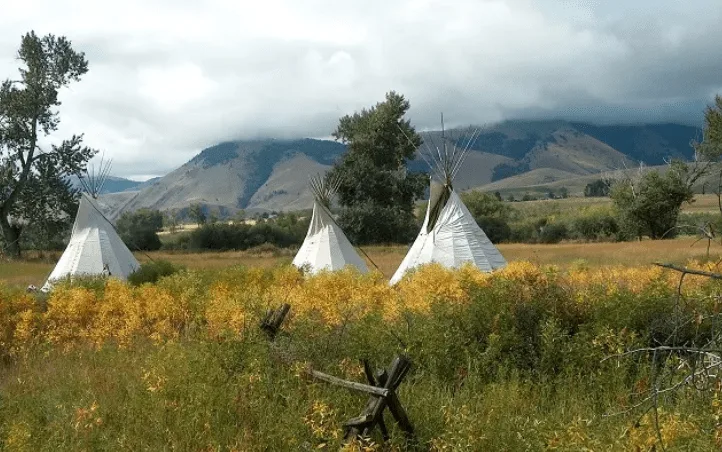
Distance from Seattle: 322 miles (5 hours, 15 minutes)
Nez Perce National Historic Park is headquartered in north-central Idaho and commemorates the history and culture of the Nez Perce people. The park is spread across 38 sites in Washington, Idaho, Oregon and Montana.
The visitor center at Spalding has a park film that introduces you to the Nez Perce people as well as several museum exhibits showcasing their culture. Visitors can learn about the history of the Nez Perce people and their interactions with American settlers. The park includes several interpretive exhibits that provide context and background information about the Nez Perce way of life, as well as the events that led to their displacement from their ancestral lands.
There are hiking trails that lead you to sites within the historic town site which includes a store, church, and cemetery as well as ruins of an old mission.
Other sites to explore include Buffalo Eddy where several petroglyphs are carved into the rocks near the Snake River, the Hasotino Village archeological site which shows evidence the Nez Perce have lived in this area for 11,000 years, and the Weis rockshelter which has been used for at least 8,000 years.
- 83 Best Disneyland Tips & Tricks for 2025 - June 20, 2025
- The 15 Best Island Vacations for Families in 2025 - June 23, 2025
- 10 of the BEST Waterfalls in the US- Easy Hikes and Big Views - June 9, 2025

